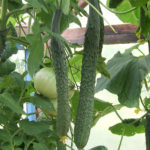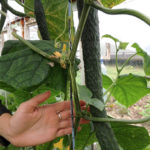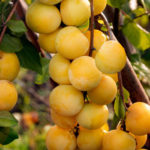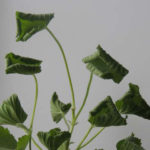Rose Heidi Klum
The patio rose occupies an intermediate position between miniature varieties and floribundas. This culture was allocated to a separate group relatively recently, but very quickly became popular. The main advantage of this perennial is its small size and lush flowering, thanks to which the plant is very fond of landscape designers and ordinary flower growers. Heidi Klum is quite noticeable in this group, as she managed to combine the signs of a floribunda and a hybrid tea rose. Having seen her at least once, you can hardly forget. But she conquered rose growers not only with excellent external data, this miniature plant is highly resistant to diseases and tolerates the conditions of central Russia well.
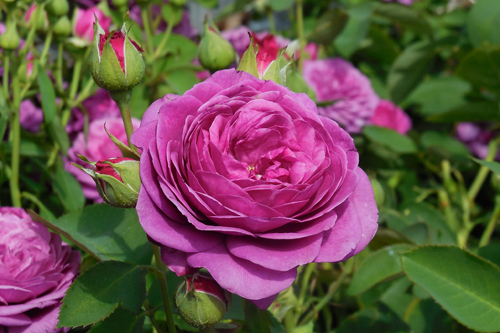
History of creation
Creating a rose is not an easy task, sometimes many years pass from the moment of crossing certain forms to the appearance of a decent result. Our spectacular heroine was born thanks to the painstaking work of Hans Jürgen Evers. The lilac-pink floribunda Old Port (Samuel Darragh McGredy IV, 1991) and the dark red hybrid tea variety Barkarole (Hans Jurgen Evers, Mathias Tantau Jr., 1995) were selected as parental forms. In Germany, the new product was presented by the rose-growing company Tantau. It happened in 1999, while the variety had only the code names TAN00681 and RT 681. The beautiful German woman found her present name in 2005 at a flower show in the Dingers garden center. The event was attended by the famous model and TV presenter Heidi Klum. In recognition of the merits, the model was asked to choose the most beautiful novelty in order to name it. The choice was not accidental. They say that on this day Heidi wore a dress that was in the same color range as our beautiful rose. The variety was then named and registered as Heidi Klum.
Description
The bushes are rather miniature, 40 - 50 cm high, compact, no more than 30 cm wide. Shoot formation and foliage are good, so the perennial looks magnificent. Shoots are thin but strong. Spines of medium to large size, reddish, are present in small numbers. The leaves are rather large, pinnate, rich green, with oval-elongated plates. The surface of the leaf blade is matte or semi-glossy, with delicate nerves. At the ends of the shoots, inflorescences are formed, consisting of 3 - 5 buds. Sometimes single flowers appear, which are slightly larger than those collected in flower brushes.

The buds are small, dense. The opened flower fascinates with its regular deep-cup-shaped shape, very similar to the old one - the outer petals of the rose gracefully tilt back, while the inner ones retain the shape of the bowl. The rosettes are neat, well-filled, densely doubled, composed of 40 or more petals. Therefore, even in a fully opened flower, the middle is not visible. The size of the flowers is small, the diameter is 5 - 6 cm, sometimes it reaches 9 cm. The color of the variety is extraordinary and very beautiful. She is described as a lilac pink. But in the color, deeper lilac tones or raspberry-pink shades are also visible. As flower growers noticed, the color can be influenced not only by the age of the flower, but also by the acidity of the soil in which Heidi Klum grows. In the process of dissolution, the color practically does not change, but as the flower matures, a slight silvery bloom appears on the tips of its petals.
Flowering period
Inherited from the floribunda, the magnificent Heidi Klum has inherited the ability to bloom again. Therefore, throughout the season, the perennial is strewn with both bright clusters-bouquets and individual flowers. Flowering begins in late May or early June, depending on the region, ends in October, with the onset of persistent cold weather. The flowering is abundant, but according to the observations of flower growers, the rosette does not retain its decorative effect for long - only about a week. In hot weather, the rose fades even faster.The culture is called very neat in the sense that the petals of the faded rosette themselves crumble, so the decorativeness of the perennial does not suffer, and the grower does not need to approach it with scissors every day to remove untidy flowers. The aroma of the variety is complex, rich, strong, very pleasant. Some people compare it to an expensive perfume. And to someone it reminds the smell of ripe apricot mixed with notes of cinnamon.
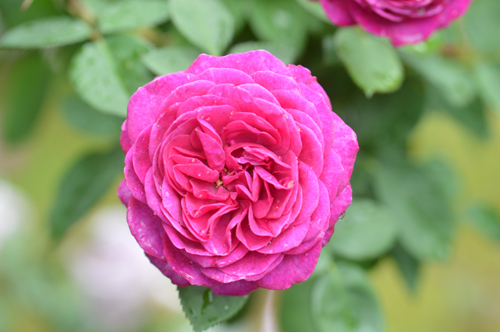
Characteristics
- Already in the first year of planting, the Heidi Klum seedling shows great decorativeness - it grows well and does not skimp on flowers;
- like most cultures, our heroine is acclimatized in USDA zone 6 (according to the system adopted by the US Department of Agriculture). That is, the rose can winter at temperatures from -20.6 ° C to -23.3 ° C. There is evidence that the variety thrives in zones 5 and 4 of the USDA, but in these regions, the shrub must be covered for the winter, using any non-woven material that allows the plants to breathe freely;
- the originators declared a very high resistance of the variety to the main diseases of the crop. Indeed, according to the reviews of flower growers, Heidi Klum, even in unfavorable years, practically does not get sick with black spot and powdery mildew. But there are also exceptions to the rule. For example, rose growers in cool regions often complain that a rainy period can undermine the health of our heroine and then she is not able to resist diseases;
- the rose is very resistant to rain. The flowers, despite their dense doubleness, easily withstand even prolonged precipitation, do not deteriorate and do not lose their decorative effect. Flowering in the wet period practically does not stop. Only a small number of buds may not fully open these days;
- in a temperate climate, the petals are not afraid of the sun's rays, and the cool sun does not affect the duration of flowering;
- many growers have appreciated the cultivar as a cut crop. The shoot, although small, is strong enough to hold even the largest-flowered inflorescence. In a vase, the plant looks very dignified, it's a pity that the petals quickly crumble.
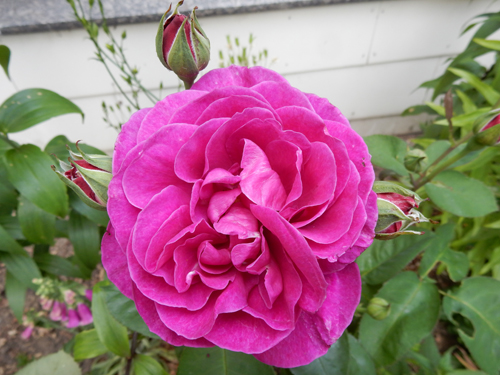
Agrotechnics
The preferred planting season for the beautiful Heidi Klum is spring. Before the onset of the winter period, the plant will have enough time to settle down and prepare for the dormant period. Like all roses, our heroine loves a sunny, slightly ventilated area. The soils are well drained, nutritious, with neutral acidity. Watering is needed moderate, but sufficient. It is important to find a middle ground here, because the plant equally does not tolerate waterlogged or overdried soils. Top dressing is carried out standard, nitrogen-containing fertilizers are used in the spring, potassium and phosphorus during the flowering period. Prevention is mandatory, despite the high resistance of the variety to diseases. It is especially important not to miss treatment for diseases in the spring, when the awakened rose is only gaining strength. The pruning is carried out medium, mainly according to the scheme typical for hybrid tea roses.
A special feature of the miniature Heidi Klum is the ability to grow it in different varieties. The variety is used as a pot plant. This is very convenient for those who have very few seats. It is grafted onto a stem, and then a plant of incredible beauty is obtained, which arouses admiration among everyone who happened to see it. The highly decorative variety is ideal for use in landscaping. Low perennials are placed on flower beds, mixborders, they decorate tall crops, often suffering from the exposure of the lower part of the bush.
Heidi Klum has proven herself in central Russia. This small rose is named among the most hardy and reliable varieties. It seems that she doesn’t care about anything - both frosts, and rainy periods, and diseases. She is quite unpretentious in leaving.In a properly selected area, a sophisticated German woman will sparkle with incredible colors and delight with small but spectacular flowers. Despite the laudatory reviews, there are still dissatisfied rose growers, in whom the plant is often sick and does not winter well. But this is a rare exception, and most likely it is due to improper agricultural techniques or an initially weak seedling, from which, if desired, you can try to grow a healthy and worthy plant.
